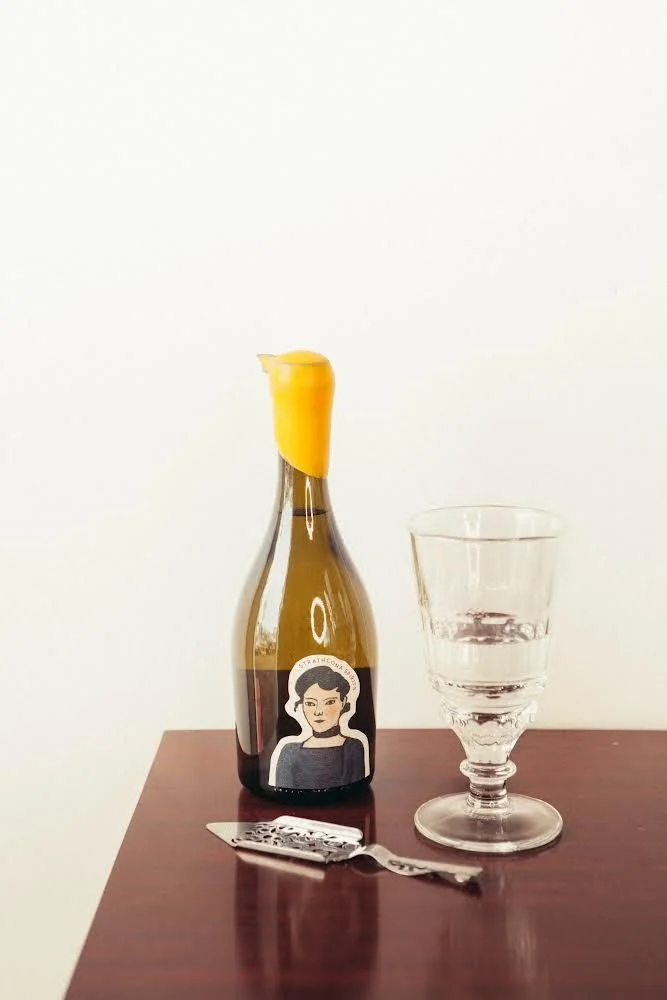Photo credit: https://www.facebook.com/photo/?fbid=605644937750431&set=pb.100049147912643.-2207520000.
Favourite craft spirit:
Anything finished in red wine barrels.
Favourite whisky:
I love all whisky. I don’t have a favourite.
Guilty-pleasure beverage:
Tim Horton’s coffee.
Best-selling spirit:
It’s a tie between our Pinot barrel-aged gin and our Velvet Cream.
I’ve read about your visit to the Absinthe Trail in Europe. Was that what inspired you to make an absinthe, or did you visit the trail specifically for the purpose of learning how to make absinthe?
I’m interested in absinthe as an obnoxiously misunderstood spirit. I was contemplating creating an absinthe and then I stumbled upon the Absinthe Trail when I was researching absinthe production. It only made sense to go there, cut my teeth there and taste the absinthe as [it’s] being made currently there. There’s a museum along the trail called the House of Absinthe from which I poached a recipe from an old document that was just a handwritten note. Then I augmented it with some local botanicals and made it our own.
Louching [when a spirit turns cloudy or opalescent as ice or ice water is added] is a desirable part of the absinthe drinking experience, but also a production issue with botanical-heavy spirits. Did you have any challenges with louching during the manufacturing process?
Credit Strathcona Spirits
The original iteration of our absinthe didn’t louche well … not as powerfully as I wanted when the ABV is reduced [with ice water]. There’s supposed to be an absolutely unbelievable amount of botanical compounds in your absinthe. If it doesn’t louche [the botanicals are] not in there; that amount of botanical load can’t be contained in alcohol of a lower percentage. We’re very proud of our whole profile of our absinthe and probably disproportionately proud of the louching.
What about the understated bottle design? Is there a story behind it?
I think absinthe is confusing enough; we wanted to make it look simple, at least. The artwork on it is a Matisse painting. I had been thinking a lot about how artists exchange value for their work: musicians trading melodies or parts of songs, artists trading their paintings. There was a story I stumbled upon about Pablo Picasso when he was a bit of an absinthe-head, living in France. I learned that Picasso had exchanged artwork with Matisse over an absinthe bender, and [our label art] was the piece traded to Picasso. The picture was of Marguerite, [Matisse’s] daughter.
About your whisky program: you tend to work with wheat quite a bit. Is that because it’s what you mash most often, or are you a big fan of wheat whisky?
I love working with [wheat]. Most of our products are wheat based. We have a great relationship with our wheat farmer. I’ve also thought for many years that wheat whisky is a little under-represented and under-appreciated … I don’t think it’s given its equal shake. I still think it might blow up [in popularity] some day.
Is there a barrel in your warehouse that you’re most excited to release one day?
I think it’s our five-year Pinot-barrel finished [whisky]. We tasted it at three years and caught it at a moment of weakness; nothing was working. And then we put it at the back of the rickhouse and pulled it out again at five years. I don’t know when it turned the corner, but I wish we would have [made] more. All the things that were going wrong turned into endearing attributes.
What’s on the horizon for the distillery in the future?
We’ve got a real funky thing coming out. It’s a chaga mush-rum rye. The mushrooms were wild foraged, and then extracted. That base of unaged rye is subsequently blended with some aged rum. It’s sweetened with maple syrup and bottled at 33 per cent [ABV]. It’s kind of light, but it’s a unique harmony of its parts.


